Leads are most often understood as contacts who have in some way demonstrated a willingness to do business with us. These contacts do not include only existing customers. An example of a lead is a person who subscribes to your company's newsletter.
What is the proper definition of a lead? How to prepare a lead generation strategy, and what will be the new tasks of marketing and sales departments in a world where the customer knows almost everything about the brand before even meeting the salesperson? Read our guide and learn how you can improve your sales lead generation process.
From this guide you will learn:
🡵 The process of generating leads
Leads are most often understood as contacts who have in some way demonstrated a willingness to do business with us. These contacts do not include only current customers. An example of a lead is a person who subscribes to your company's newsletter. Such a definition, however, may seem too broad and unhelpful. In the Polish language we will not find an exact equivalent for the word "lead", it is most often associated with "potential customer". In practice, the unspecific definition of a lead often leads to misunderstandings between the marketing and sales departments. Salespeople, knowing that the company's marketing department is tasked with generating leads, expect "ready" customers who are just waiting to be presented with an offer. Marketers, on the other hand, tend to give sales representatives every piece of information about potential customers, even those that seem baseless from the point of view of the sales department. Trying to reliably define what a lead is for your business will help you avoid communication problems within the company.
It turns out that there is no single definition of a lead that fits every situation and company. That's why it's a good idea to clearly define it in your organization, and then use it in your marketing and sales efforts. Your lead can be a very general one, with one condition - it has to provide a prospect with further work. In our opinion, the general definition of a lead is the communication of any data that can be used in the process of communication with a potential customer. This is what differentiates a lead from a prospect. A marketing prospect (not to be confused with a sales prospect) is a piece of information that does not yet contain data that allows contact. Prospects will be anonymous visitors to your website or conference attendees. In either case, you need to find a way to initiate appropriate communication.
If someone has given the company their email address and agreed to receive newsletters, there is a chance for further communication that could result in a sale - that's a lead. In this guide we will discuss examples, tactics, elements of strategy and other tools that will develop the lead generation process in your business.
What can you include in your definition?
Although we recommend that the definition of a lead depends on the internal assumptions of your company's departments, it's a good idea to base it on three types of information:
There are different types of leads depending on how they are qualified and at what stage of advancement they are. We will elaborate on this topic in the section on lead qualification. However, in terms of the standard division by qualification itself, it is as follows:
Marketing qualified lead (MQL)
Marketing qualified leads are those who have engaged in some activity with your company, but are not ready to meet with a salesperson. An example of an MQL is a contact who fills out a form on your landing page lead.
Sales qualified lead (SQL)
Leads that have already passed marketing and sales qualification. These are contacts who have taken actions that clearly indicate interest in your product. An example of a SQL is a contact who fills out a form to ask a question about a specific product or service.
Product Qualified Lead (PQL)
These will be contacts who have used your product (e.g., for free) and have taken actions that indicate a desire to become a paying customer. PQLs usually exist for companies that offer a trial or limited version (e.g. HubSpot). An example of a PQL is a customer who uses the free version of a product, but engages or inquires about features that are only available in the paid version.
Service Qualified Lead (SQL)
Service qualified leads are contacts or customers who have demonstrated to your service team that they are interested in a service. This would be, for example, a customer who has told your consultant that they would like to upgrade their product subscription. Then the customer service representative can provide this information to the sales department or a specific sales representative.
Lead generation is the process of attracting and converting a potential customer into someone who shows interest in your product or service. Examples of activities aimed at generating leads include job applications, blog posts, coupons, live events and online content. These are also activities designed to identify prospective customers and assess their readiness to purchase your service. Sales lead generation is also about taking care of the efficiency of the sales process.
Generating leads is the second stage of inbound markting activities. First you attract an audience of interested customers, and then you convert them into leads for your sales team.
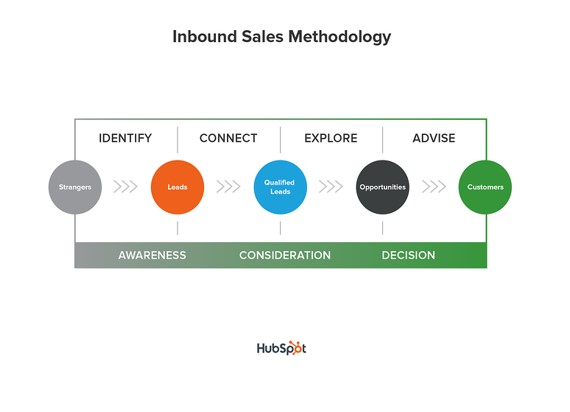
Source: www.hubspot.com
"Content is King" - this was the theme of an essay that was written by Bill Gates, later published on Microsoft's website. In it he stated: "Content is where I expect much of the real money will be made on the Internet, just as it was in broadcasting." These words support the thesis that content marketing plays a big role in the lead generation process.
By creating good quality content that is helpful and valuable to your audience, you will be able to achieve success. You don't have to share countless pieces of content at all. It's enough to have one or two really well-tailored types of content to gain new contacts. In this section, you'll learn what to publish to effectively acquire new contacts. However, if you want to go more in-depth about generating leads with the help of content marketing techniques, we elaborated on the topic in our first webinar.
Social media platforms not only make it easier to build awareness of your brand, but they are also a place from which you can generate traffic to your site - calls to action, redirect links in the description, paid ads - will serve you perfectly for this. You can also break down many barriers to sales by offering to try your product or service. Once a potential customer uses your product, you can entice them with additional offers or resources to get them to buy.
Social media marketing is now the most popular and inexpensive form of business promotion. SMM has expanded its reach from being just a tool for connecting people online to become the largest hub for bringing people closer to the products and services they need.
Twitter today gives you the option of so-called Twitter Lead Gen Cards, which allow you to generate leads directly on the portal without having to leave the site. Your name, email address and username are shown automatically, and all the recipients have to do is click "Send" - so that they become your lead. If you use the Hubspot system, you can connect Twitter lead cards to your forms. (Learn how to do that here).
LinkedIn is a thriving social media channel that is increasingly being talked about in the context of marketing. It is now seen as the best social network for lead generation. In 2019, the We Are Social report noted more than 600 million Linkedin users worldwide. This number is growing steadily. Regarding the lead generation process, LinkedIn has created Lead Gen Forms, which, when a CTA is clicked, automatically populates with the user's profile data, making it easier to capture information.
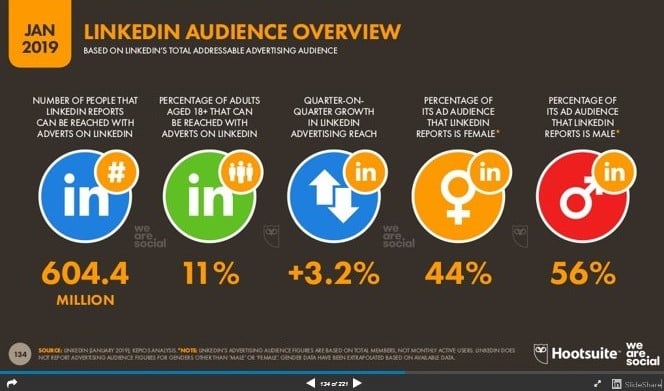
Source: https://hootsuite.com/pages/digital-in-2019#accordion-115547
The sole purpose of advertising is to get people to take action. If you want your ad to convert, make sure the landing page it redirects to offers exactly what it promises.
Use professional demographics to target the right people by job title, company, industry, seniority and more.
Retarget site visitors, make connections and build account-based marketing campaigns with tailored audiences, a compilation of custom targeting options.
Mailing is a great way to reach people who already know your product or service. It's much easier to ask them to take action because they've already subscribed to your list. Emails tend to be a bit cluttered, so use CTAs that contain a catchy message and are designed in an eye-catching way.
Blogging proves helpful because it has two advantages - you showcase your knowledge and expertise to the user, and at the same time you can promote your offerings. Remember not to be too pushy. You can't turn your post into an advertisement. Keep in mind its substantive dimension. Blog texts can also position your site extremely well (See how to write an effective SEO blog).
If you haven't started your blogging adventure yet, Hubspot offers free templates, that will save you time, then when you intend to put up your blog from scratch.
A website is the best place to get your customers' contact information. You need to make sure your information is clear, aesthetically pleasing and good content that not only perfectly describes your product or services, but also provides industry knowledge and shows you as an absolute expert in the field.
Treat your website as a place for people in the consideration phase. Here are our three tips on what you should follow when working on your site:
• Write what problems you solve
• Write is your product and service and how it responds to problems
• Show what your current/former customers think of you, and boast about working with valued brands that have chosen you.
• Bet on 1-2 videos that will grab attention
• Promote at least 1 or 2 materials on your site that are available only after registration
Be open to a variety of possibilities - let the potential customer choose their favorite form. In addition to the standard channels, such as phone, chat, or form, allow SMS or contact on LinkedIn.
For those who don't like to talk on the phone, but expect an immediate response from the brand, a good option would be to offer the recently popular chat box. Your visitors will appreciate the convenience of not having to wait for an email response. Plus, getting immediate help from a live chat person will be a reason to appreciate customer service.
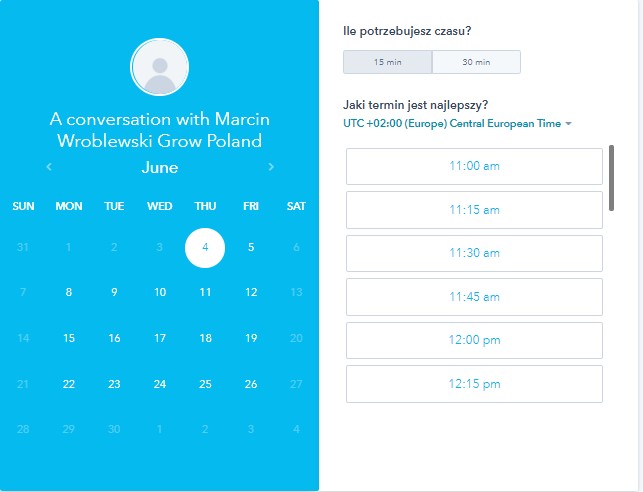
In Grow with just a few clicks, you can schedule a call with our representatives
– at a time of your choosing.
Pillar page, a comprehensive guide to an issue you have identified as important to your customer. Consider the fact that today time reduction counts a lot in business. If you are somehow able to help your potential customer by preparing a dose of condensed industry knowledge for them - do it. Recipients will appreciate you saving them time and gathering all the issues in one place. In this way, you can help them make the right business decision.
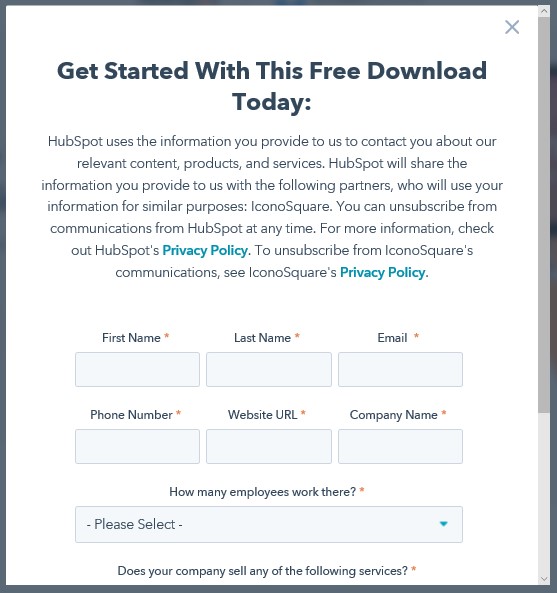
Resource: https://www.hubspot.com/resources/ebook
The form you need to fill out if you want to download a free e-book from the Hubspot website.
There are different opinions about pop-up forms. Many have claimed that they are cumbersome and annoying to visitors.
However, statistics show that pop-ups can double your subscription rate compared to traditional forms. In fact, the top 10% of pop-ups performing the best are averaging a 9.28% conversion rate. Although the average conversion rate for all pop-ups is 3.09%, this is an impressive number.
A few best practices for pop-ups include:
• Don't "pop up" right away and scare people away. Give recipients time to get to know your site.
• Follow a minimalist approach. Your pop-up should, of course, suggest some next step (such as signing up for a newsletter).
• Don't show pop-ups to visitors who have already signed up. Show a personalized pop-up to a visitor who has items in the shopping cart, but is slow to make a purchase.
Webinars, especially today during the pandemic crisis, are a very popular format to use. On the topic of lead generation, they prove helpful, mainly because attendees have to leave some data to complete a registration. Landing Pages, on the other hand, are simple web pages usually designed for a specific project - such as just a webinar. If your goal is to get contacts from people who want to register for your webinar, then you need a place where this can be done. This will be the landing page.
This is where marketing automation systems, which allow you to quickly create such pages without involving web developers, will prove helpful. Forms on landing pages, are very effective tools for collecting data, especially personal data.
Always try to convince the user that the material you offer him will give him a benefit - it will develop some substantive issue or help him make a business decision. Describe how his data will be used by you. Remember not to overdo the number of requirements - you can't scare off the recipient! Defining your lead yourself, you need to determine what data will turn out to be needed for your business at a particular stage. Your data acquisition strategy depends mainly on your profile.
However, we recommend you consider the following:
• How many leads do you have?
• What does your lead qualification look like?
• If you have a lot of leads and you don't manage to contact every person systematically, or the conversion from lead to MQL is high - collect more data to prioritize follow-ups
As we said above, you can't scare your recipient by asking for too much information at once - it doesn't work. Collect data in phases.
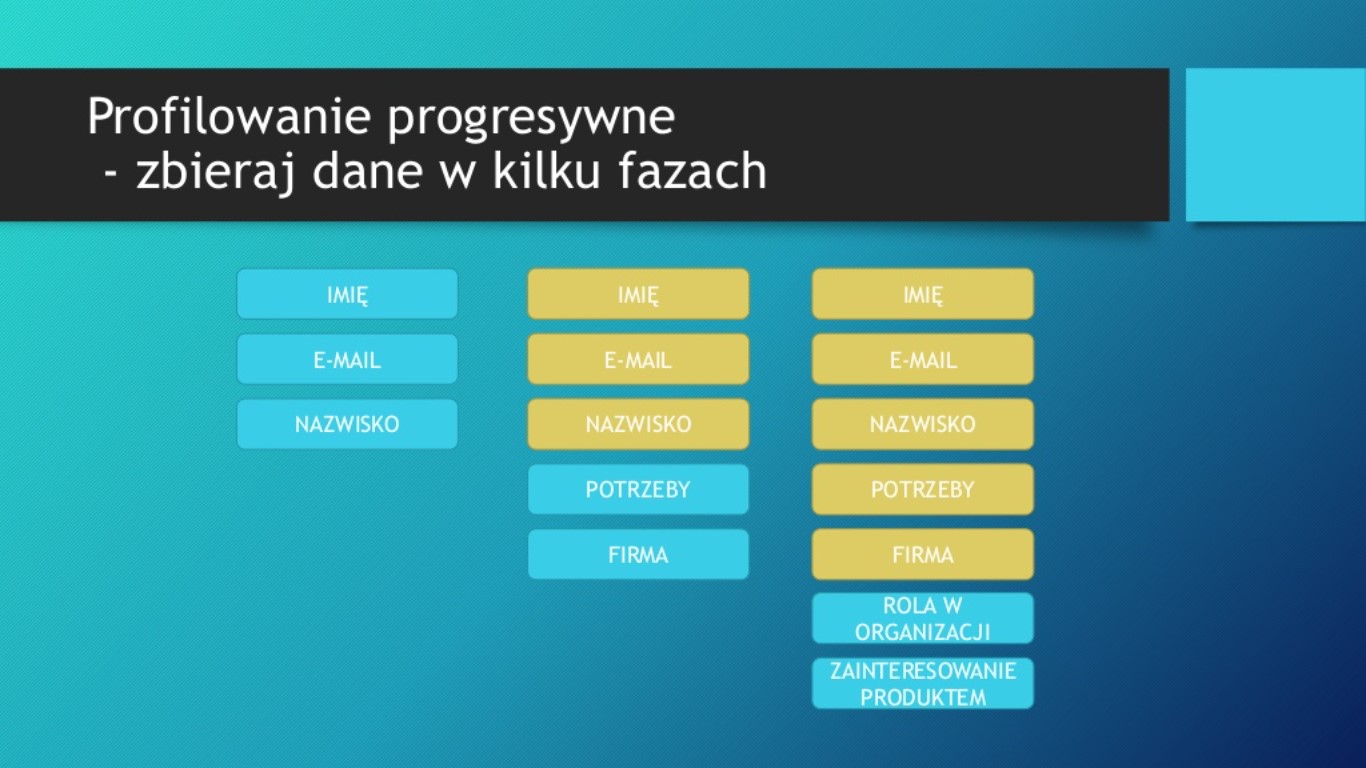
It is worth recalling at this point the term gated content. This will be all the content that you decide to share with your audience on the condition that they perform an additional action - most often, it's just filling out a form with their data. If you want to learn more details about this publishing tactic and what mistakes to avoid when you share content asking for something in return, listen to #20 of Luke Kosuniak's podcast on the topic.
Once again, it's important to mention how useful marketing automation tools seem to be when it comes to data replenishment. If only because any acquisition of personal data is governed by regulations - so you need to take care of appropriate consents for its processing and use. In Marketing Automation such consents are described in one place, so that anyone who creates a new form will use the existing module. This speeds things up a lot and reduces the risk of violating RODO regulations.
The moment a lead shares his or her email address - thanks to the solutions MA offers - you'll know who your recipient is, where he or she works and what pages he or she has visited - all in real time.
When someone views an offer or checks your prices, you'll be ready to send a personalized email right away, without the need for your IT department.
And with simple but powerful analytics, you'll learn more about what's working and what's not - such as which traffic sources, pieces of content or ads are driving the most conversions.
Easily add contact forms and pop-ups - no coding required. Collected forms automatically capture submissions, even if they come from another tool. Once forms are filled out and resources are shared, or just, say hello from a touch base, you can follow up.
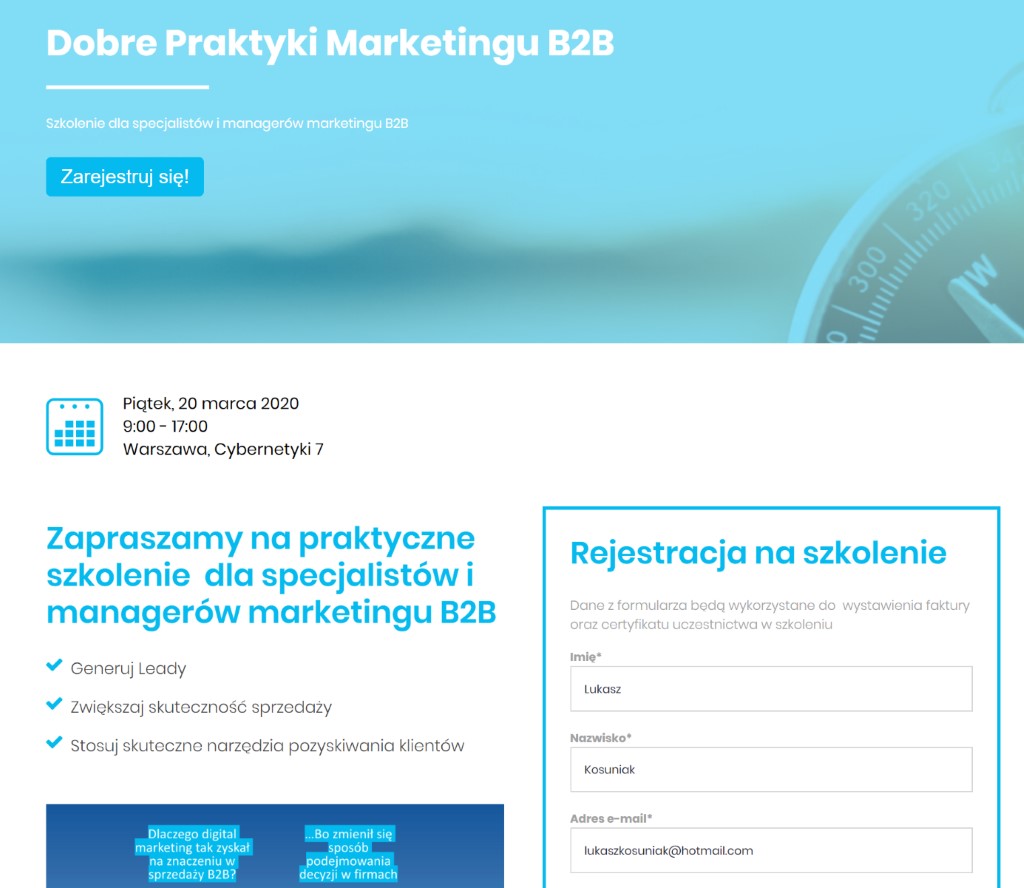
Landing Page with registration form created in HubSpot system. With ready-made templates, creating a new page is a matter of minutes. No programming or graphic design knowledge is required.
When a lead submits a form, additional contact information is automatically pulled from across the web, including job title and social profiles.
You'll see how they arrived and what they were looking at even before they filled out the form. And when they return, tracking will start where it left off. Each activity is recorded in a structured timeline in the CRM, so you know exactly where the lead is.
Using the contact information stored in the CRM, you can easily create personalized emails with a drag-and-drop editor. Once leads return to your site, use live chat to engage with them and manage these interactions through a unified team inbox.
Built-in analytics make it easy to know which pages, offers, ads and traffic sources are driving the most conversions. Find trends in the way your site is navigated and use those insights to drive more conversions.
Today's marketing automation systems give us the ability to engage potential customers with our content very early in the decision-making process. With the right content tailored to their needs and the stage of the decision-making process they are in, we have the opportunity to gain valuable data in return, which can be the start of generating leads (see How to prepare for introducing automation tools).
This is the initial stage when a lead needs to be developed, i.e. additional information needs to be acquired to prepare personalized marketing activities, and consequently open the way for salespeople to start the sales process. These are activities that will allow you to decide whether it is worthwhile to engage with a potential customer and redirect the message to your sales representative.
One of the most popular is the BANT method - a way to analyze inquiries and leads. It consists of the following elements:
B - Budget - does your potential customer have the budget to purchase your service?
Marketers, especially if they use content marketing and marketing automation, do not need to focus on whether a potential customer has a budget in the initial stages. However, when the lead is about to be passed on to the sales department, this information is important.
A – Authority - the decision-making power of the lead - can the person you are communicating with make a buying decision?
Marketers need to determine quite early and precisely who is responsible in the company for the buying decision. Increasingly, lead scoring matrix tools, which are part of marketing automation systems, are being used for this purpose. This allows marketers to use every interaction to gain new data. Often, after just a few conversations with a lead, they have knowledge of what content he or she "consumed" (behavioral), but also what he or she said about himself or herself when filling out surveys or microforms (declarative).
N - Need - the need for a particular product - What are your caller's needs? Will your product solve any of his or her problems?
The entire content marketing strategy is based on discovering real needs and helping the customer through proper education. A well-designed content marketing strategy, combined with properly applied tools, will allow you to pre-determine your customers' needs so that at the time of qualification you are already working on just specifying them.
T - Timeline - the time perspective of the purchase decision.
The earlier you can assess when a buying decision will occur, the better. We know that in B2B, sales processes sometimes drag on for years, so each organization will need to determine individually what is the right decision time to positively qualify a lead. It's a good idea to use a company's average sales closing time, take into account the customer's segment and industry.
Determining the budget at the marketing stage can be very difficult. Few customers at the early stage of contact with the company will share this information, trying to achieve it may seem too insistent.
Second, specifying the decision-making power of your contact can be confusing, since in most organizations a group of people make purchasing decisions.
A properly conducted lead generation process requires scoring of caller engagement. It is worthwhile to prepare an internal scoring of the different elements of engagement. If you use marketing automation tools, the concept of lead scoring (See #7 episode of the Business Marketer podcast - Profiling in B2B - how to engage customers and gain customer insights) is probably familiar to you. It's an internal scoring process designed to give you a snapshot of a customer's readiness to take direct sales action.
In a nutshell, the process involves engaging the customer in a set of interactions - reading an email, downloading an e-book, attending a webinar or conference - while simultaneously gaining information about, for example, their job title, responsibilities or the size of the company they work for.
Using this technique, leads are assigned a numerical value to determine where they fall on a scale from "interested" to "ready to sell." The criteria for this is completely up to you, but must be uniform across your marketing and sales department so that everyone is working on the same scale. Scoring can be based on the actions a lead has taken, the information he or she has provided, the level of engagement with your brand, or other criteria your sales team determines.
By being able to observe the behavior and characteristics of leads, we can assign weights to them that make it easier, for example, to estimate the chance of a sale.
E.g., a person who downloads an e-book on our site already shows a certain interest - we can assign them, for example, 10 points. If the same person spends an hour attending a webinar, we'll assign her more, say 30 points. In this way, we value the behavior - the engagement of the lead. The more high-scoring behaviors, the statistically higher the chance of starting the sales process.
Integration of the Marketing Automation System allows us to seamlessly transfer marketing leads to the sales department, but also allows us to track the fate of these leads and calculate the return on marketing investment.
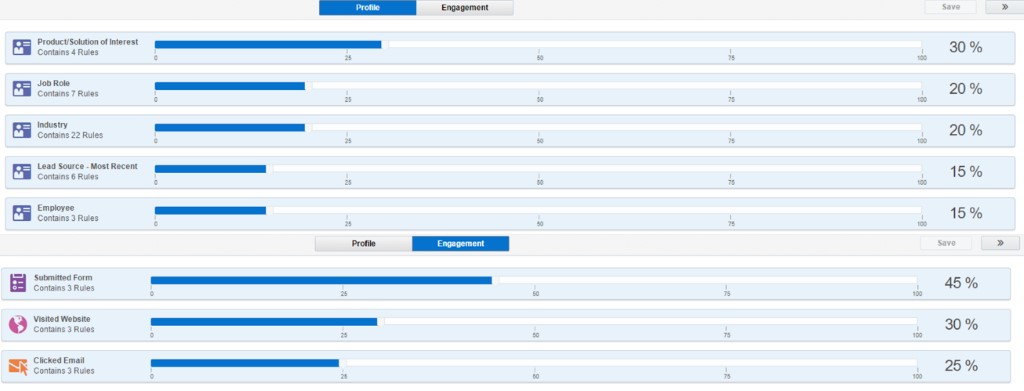 Figure above - an example of a lead scoring matrix in Oracle Marketing Cloud (Eloqua). Points are awarded based on behavior - interaction with content and for professional profile data.
Figure above - an example of a lead scoring matrix in Oracle Marketing Cloud (Eloqua). Points are awarded based on behavior - interaction with content and for professional profile data.
We already introduced this division in the first chapter. Let's expand on it a bit.
With marketing automation tools at your disposal, you should collect information and evaluate according to the criteria you have established with the sales department. You have agreed with the sales department that you only give them contacts to people who have participated in the webinar. If a contact spends an hour attending the webinar, there seems to be a good chance of starting a successful sales process.
Such a lead can be called a marketing qualified lead - a lead qualified by the marketing department to be passed on to a salesperson.
The next step is to qualify the lead for sales action, or Sales Qualified Lead. This is where the BANT criteria described above can come in handy. During a meeting or phone call, the salesperson can elaborate on the issues of decisiveness, budget, needs or prospects to make a buying decision. Typically, a lead so qualified, salespeople call a sales opportunity, from business opportunity, in salespeople's jargon OPP or BO. At this point, the lead turns into a sales opportunity and lands in the CRM.
Systems such as Oracle Marketing Cloud allow for very precise scoring criteria, so that our understanding of a lead's "maturation" will be based on data rather than assumptions. It is important that the sales team be involved in the process of determining the scoring criteria - that is, assessing the value of the lead. First, their insights will be crucial in selecting the appropriate criteria. Secondly - this is a great opportunity to explain to salespeople the logic behind the marketing automation system.
Sophisticated marketing automation systems - such as Oracle Marketing Cloud (Eloqua), for example - allow you to create several scoring matrices. This is very useful when our customer group is highly diverse.
Online lead generation encompasses a wide range of tactics, campaigns and strategies, depending on the platform on which you want to capture leads. It is a well-known fact that it is impossible today to successfully acquire leads without any online activities.
Let's think about it - isn't it the case that you start your search for products or services for yourself by putting a phrase into a search engine? This is also how your potential customers behave. They look online for solutions to problems or answers to questions about their company.
Cold calling has stopped working for this very reason. Customers today are not waiting on the phone. They are the ones who initiate the buying process. If they are planning any purchase or investment, they start with an initial look online. Whether they are decision makers in a company or buying something for their home, the first source of information will be the web.
It is said that between 50 and 70% of product knowledge is gained by B2B customers on their own before even meeting a salesperson. We might add - if the meeting happens at all. Regardless of whether your salespeople are effective - you need to have an online presence!
No one likes intrusive ads that distract and disrupt the sense of aesthetics. In all the information noise, messages reaching customers from different places are plentiful. Therefore, if you want to get noticed, you need to offer your audience content that is relevant to them. The first step in your company's new lead generation strategy should be to identify what interests potential customers and prepare content that will drive customers to your site.
Identifying your buyer personas will help you do this. You can try to do this yourself (see #16 - Buyer Persona - learn about your B2B customer's decision-making process) or enlist the help of an agency. This is the first step to publishing effective content.
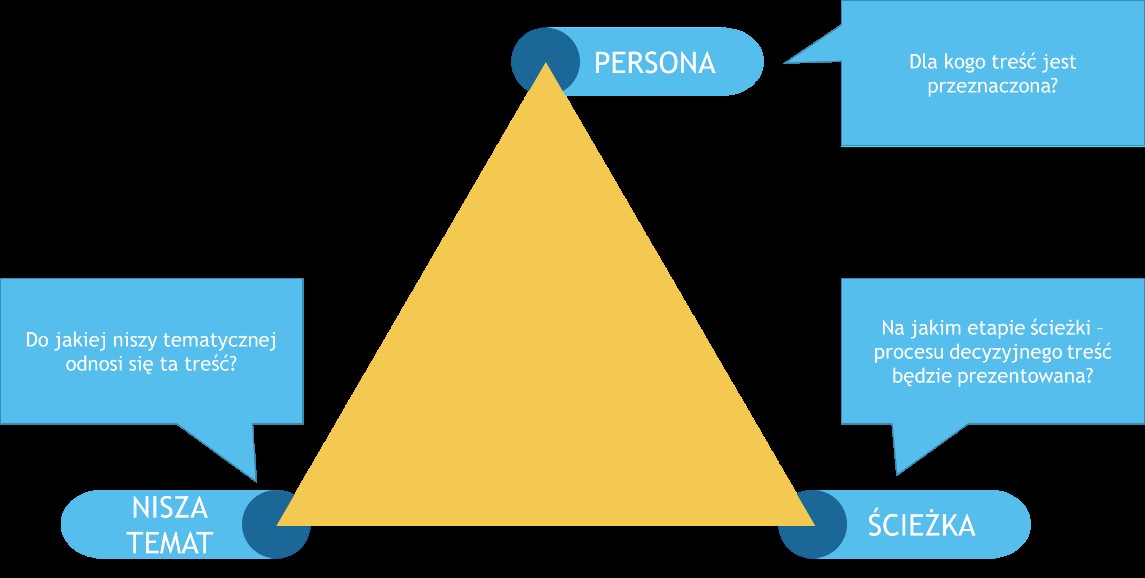
Match content format and communication channels - Taking care of customer interests also means matching content formats to customers' communication preferences. There is no single answer to the question of the optimal content format. The better you know your target audience's preferences, the easier it will be for you to choose the right content delivery method (Read the Content Marketing Guide… on management, content design and format selection).
When we say pay-per-click (PPC), we are referring to ads on search engine results pages (SERPs). Google gets 3.5 billion searches a day, making it the best place for any advertising campaign. The effectiveness of a PPC campaign depends largely on the smooth flow of users, as well as budget, target keywords and several other factors.
Use Google's Keyword Planner tool (https://adwords.google.com/KeywordPlanner) and see if the topics that relate to your business are frequently searched. Research what the competition is in this area. With the word planner you will get a lot of the information you need, such as the exact phrases your customers use when searching for specific products. This will allow you to describe your services using language that customers understand, and identify those queries that are likely to lead customers to your site.
When setting your marketing department's goals, start with what's most important - sales goals.
Example:
The plan for the marketing department's sales generated from digital activities was set at 1 million zlotys per year. The average sales value, in this case, is 20 thousand zlotys. To meet the plan, you need to acquire 50 new customers. If you have a CRM system, you can easily determine how many potential customers in the sales funnel salespeople need to have in order to close 50 deals. Let's assume the number is twice that, or 100. That's how many leads should, be generated and accepted into the sales process.
What will be the cost of acquiring a lead?
One thing is certain, it is worth estimating such a cost. You can take the so-called Customer Lifetime Value parameter, i.e. the total revenue that the customer brings in a given time of using your service.
Example:
Assuming that you sell a product that is used by a customer for about five years, and the annual fee is 100 thousand zlotys, then by simplifying the CLV will be about half a million.
Knowing what the cost of service, the cost of sales, the cost of production, and what margin you want to make in the category and segment, you can determine what portion of revenue you are able to spend on customer acquisition.
If you determine the cost of acquiring a lead and the number of leads you need to generate the targeted sales at a certain conversion rate, you will know approximately the marketing budget for performance digital marketing activities.
Lead generation alone does not guarantee sales success. It is the beginning of it. However, if marketers have done a good job, salespeople have a minimum of confidence that customers are interested in the product and are open to conversation. Therefore, it is worthwhile to introduce clear definitions of a lead and standards for handling it. We talked about definitions in the first chapter. However, it is also worth following the following rules for handling a lead:
• who receives leads, what are the minimum requirements for their quality,
• what is the mandatory time for the first contact with a potential customer.
Why is contact time so important? A study by Harvard Business Review found that salespeople who contacted a lead within an hour of the request were seven times more likely to successfully convert the lead to the next stage of the sales process than those who contacted after an hour and as much as 60 times more likely to be contacted after 24 hours. You won't always be able to bring in a contact within an hour, but 24 hours is an absolute must.
Generating leads is a complex process involving many factors. As you can see, it takes a lot of work to turn a potential customer into a lead, and that lead into a sales opportunity. Gathering additional information, combined with sharing knowledge with your audience are the most important elements you need to focus on. Fortunately, digital marketing tools make it easier to manage this process. It's important that salespeople and marketers in your company use the same definition of a lead and know what actions need to be taken for the lead generation process to result in a sale. An important task for marketing and sales departments is to define the expected results of their work. Marketers are supposed to generate valuable leads, salespeople are supposed to convert them through proper response time, education and guiding them through the steps of the sales process.